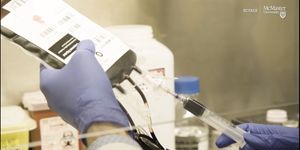A Biosesnor Can Diagnose Sepsis Rapidly
Sepsis is the result of systemic infection leading to organ failure followed by death. It claims one life every four seconds and the primary cause of death in hospitals. To diagnose sepsis, it can take hospitals up to 72 hours. Unfortunately, a septic shock can happen before a diagnosis is determined and because of challenges with time, researchers are looking for ways to make diagnosis rapid.
One of these ways is a biosensor that uses plasmonics technology to diagnosis sepsis in a few minutes instead of a few days. The novel approach employs an optical metasurface and builds on previous developments in nanotechnology that can detect certain biomarkers in the blood and trap them in ‘nanoholes’ that become a giver for sepsis. The device works much like a pregnancy test.
"Any nanoparticles that contain captured biomarkers are trapped quickly by antibodies on the nanoholes," says Alexander Belushkin, the lead author of the study.
"These nano-scale interactions are imaged by the CMOS camera and digitally counted in real-time at high precision," says Filiz Yesilkoy, the study's co-author.
"We believe our low-cost, compact biosensor would be a valuable piece of equipment in ambulances and certain hospital wards," says Hatice Altug, the head of BIOS. Scientists already have possible applications in mind. "There is an urgent need for such promising biosensors so that doctors can diagnosis sepsis accurately and quickly, thereby keeping patient mortality to a minimum," say Anna Fàbrega and Juan José González, lead doctors at Vall d'Hebron University Hospital.
Source: Science Daily









